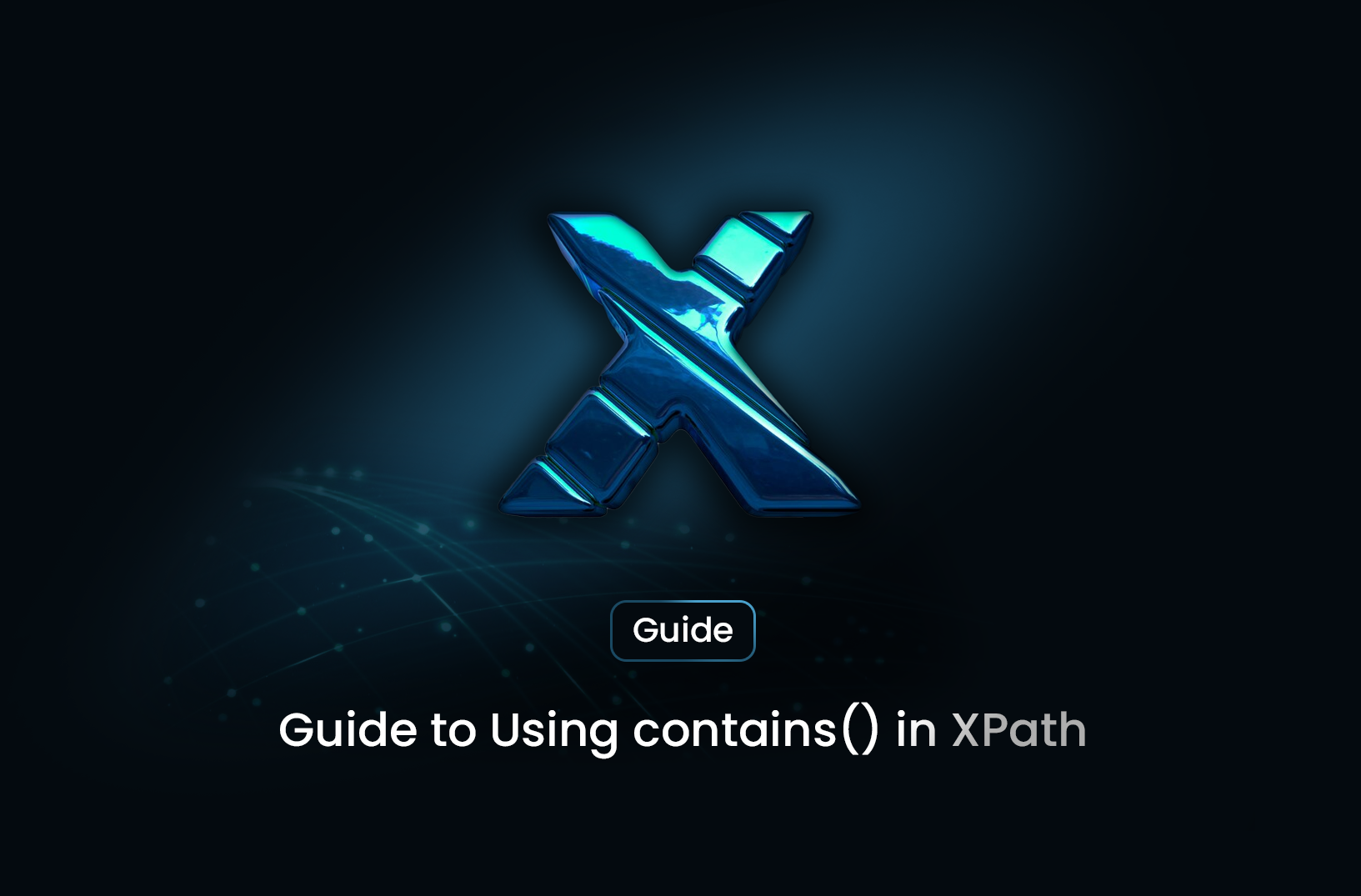
Guide to Using contains() in XPath for Text Matching
GuideXPath is a powerful language used to navigate and query XML and HTML documents. One of its most versatile functions is the contains() function, which helps locate elements based on partial text matching. In this guide, we'll explore how to effectively use the contains() function in XPath, complete with examples and practical use cases.
XPath is a powerful language used to navigate and query XML and HTML documents. One of its most versatile functions is the contains() function, which helps locate elements based on partial text matching. In this guide, we'll explore how to effectively use the contains() function in XPath, complete with examples and practical use cases.
What is the contains() Function in XPath?
The contains() function in XPath allows you to check if a specific text or attribute contains a substring. This is particularly useful when the full text of an element or attribute is dynamic or too long to match exactly.
Syntax:
//tag[contains(text(), 'substring')]
//tag: Selects the tag you want to target.
contains(): Checks if the text() or an attribute contains the specified substring.
'substring': The partial text you want to match.
Examples of contains() in XPath
1. Matching Partial Text in Elements
Suppose you have the following HTML structure:
<div>
<p>Welcome to XPath tutorials</p>
</div>
To locate the <p> element containing the word "Welcome":
//p[contains(text(), 'Welcome')]
If a button's text changes dynamically, you can use contains() to locate it:
<button>Click here to continue</button>
XPath:
//button[contains(text(), 'Click here')]
3. Matching Attributes
You can also use contains() to find elements by attribute values:
<input type="text" class="user-input-field">
XPath:
//input[contains(@class, 'user-input')]
Web Scraping
When scraping websites, text or attribute values might be inconsistent or dynamically generated. contains() helps handle these variations efficiently.
Automated Testing
Tools like Selenium use XPath to locate elements on web pages. contains() can be used to create flexible and robust locators:
from selenium import webdriver
driver = webdriver.Chrome()
driver.get("https://example.com")
element = driver.find_element_by_xpath("//button[contains(text(), 'Submit')]")
XML Parsing
If you're working with XML documents and need to locate nodes based on partial text matches, contains() simplifies queries.
Best Practices for Using contains()
- Avoid Overuse: Use contains() only when necessary. Exact matches are faster and less prone to errors.
- Combine with Other Conditions: To narrow down results, combine contains() with other XPath functions or filters:
//div[contains(@class, 'container') and @id='main']
- Be Case-Sensitive: XPath is case-sensitive. Ensure your substring matches the case of the text or attribute.
Common Errors and How to Avoid Them
Error: No Matches Found Ensure the substring exactly matches part of the target text, including spaces and cases.
Error: Multiple Matches If contains() returns too many results, combine it with other filters to refine your query.
Conclusion
The contains() function in XPath is a handy tool for partial text and attribute matching, especially in dynamic or inconsistent HTML/XML structures. By understanding its syntax and use cases, you can enhance your XPath queries for web scraping, testing, or XML parsing.
For more advanced XPath techniques, explore related functions like starts-with() and ends-with(). Happy querying!
Find more insights here

Error Code 520: What It Means, Why It Happens, and How to Fix It Quickly
Error Code 520 explained: what it means, why Cloudflare triggers it, common causes, and how to fix o...

Screen Scraping Software: What It Is, How It Works, and the Best Ways to Use It in 2025
A complete guide to screen scraping software in 2025—use cases, differences from web scraping, and h...

Google Maps Scraper: The Complete 2025 Guide for Location Data, Leads, and Business Intelligence
A complete 2025 guide to Google Maps scraping. Learn what data you can extract, use cases, challenge...
